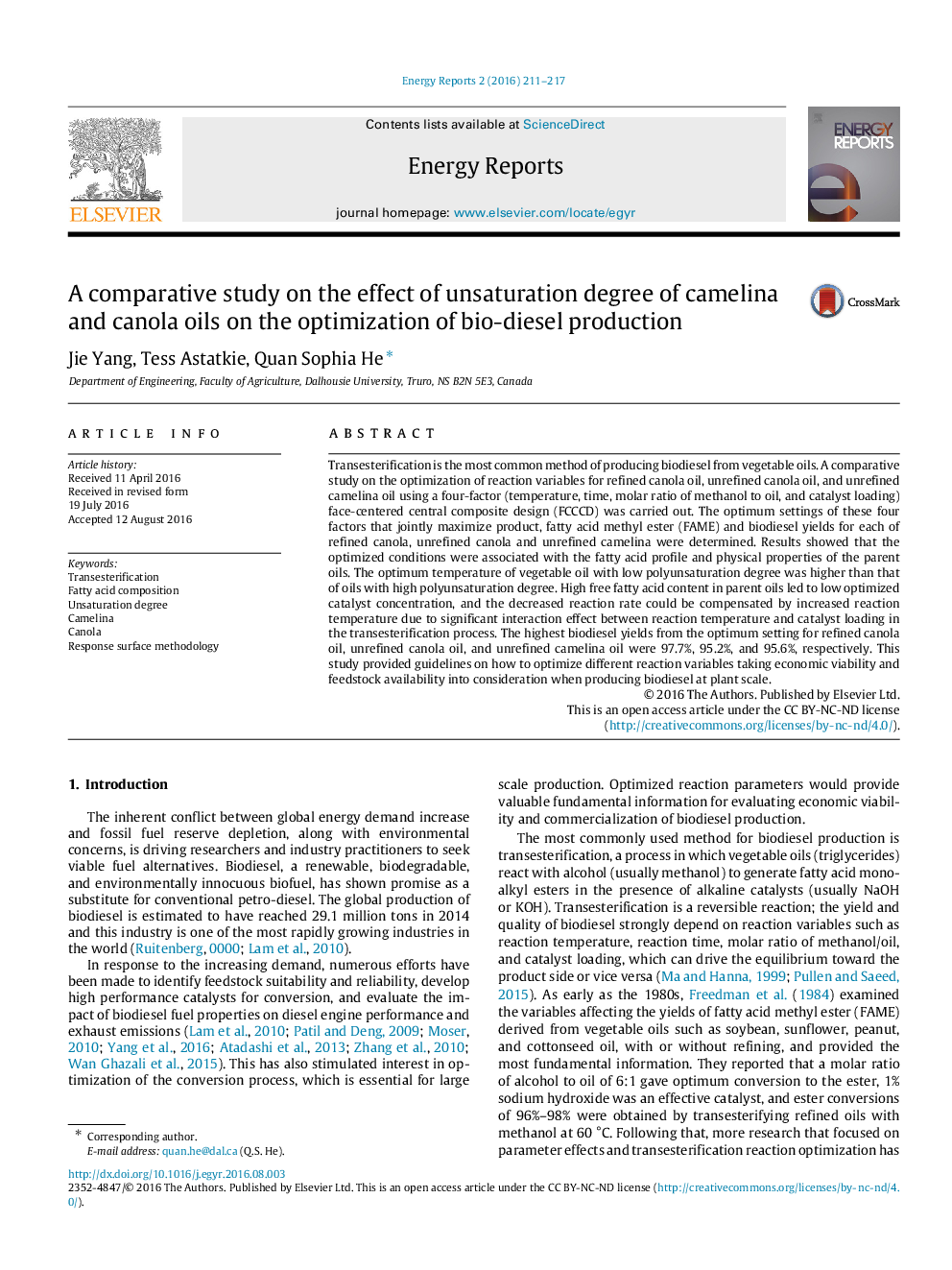| کد مقاله | کد نشریه | سال انتشار | مقاله انگلیسی | نسخه تمام متن |
|---|---|---|---|---|
| 1736760 | 1521526 | 2016 | 7 صفحه PDF | دانلود رایگان |
Transesterification is the most common method of producing biodiesel from vegetable oils. A comparative study on the optimization of reaction variables for refined canola oil, unrefined canola oil, and unrefined camelina oil using a four-factor (temperature, time, molar ratio of methanol to oil, and catalyst loading) face-centered central composite design (FCCCD) was carried out. The optimum settings of these four factors that jointly maximize product, fatty acid methyl ester (FAME) and biodiesel yields for each of refined canola, unrefined canola and unrefined camelina were determined. Results showed that the optimized conditions were associated with the fatty acid profile and physical properties of the parent oils. The optimum temperature of vegetable oil with low polyunsaturation degree was higher than that of oils with high polyunsaturation degree. High free fatty acid content in parent oils led to low optimized catalyst concentration, and the decreased reaction rate could be compensated by increased reaction temperature due to significant interaction effect between reaction temperature and catalyst loading in the transesterification process. The highest biodiesel yields from the optimum setting for refined canola oil, unrefined canola oil, and unrefined camelina oil were 97.7%, 95.2%, and 95.6%, respectively. This study provided guidelines on how to optimize different reaction variables taking economic viability and feedstock availability into consideration when producing biodiesel at plant scale.
Journal: Energy Reports - Volume 2, November 2016, Pages 211–217
